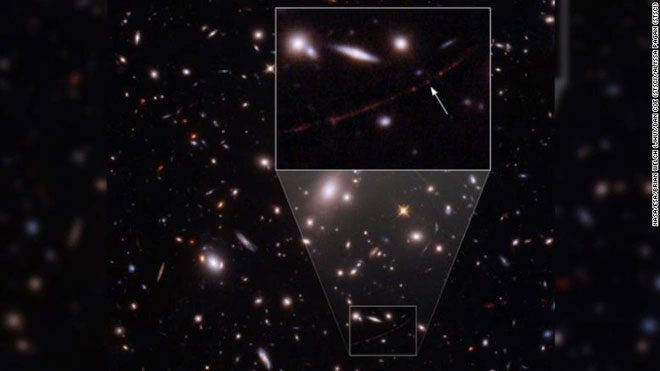The Hubble Space Telescope has captured images of the most distant star ever observed, located 28 billion light-years away.
According to a detailed study published on March 30 in the journal Nature, the star may be between 50 to 500 times heavier than the Sun and millions of times brighter, CNN reports.
This is considered the farthest star ever observed, existing 900 million years after the Big Bang. Astronomers have nicknamed this star Earendel, derived from an Old English word meaning “morning star” or “rising light.”
This observation breaks the record set by the Hubble Telescope in 2018, when it captured an image of a star that existed when the universe was about 4 billion years old.
According to scientists, the light from Earendel took 12.9 billion years to reach Earth.

The location of Earendel as recorded by the Hubble Telescope. (Image: NASA).
The observation of Earendel could help astronomers study the early periods of the universe.
“When we look into the universe, we are also looking back in time, so these extremely high-resolution observations allow us to understand the building blocks of some of the first galaxies,” said Victoria Strait, a co-author of the study and a postdoctoral researcher at the Cosmic Dawn Center in Copenhagen.
“When the light we see now from Earendel was emitted, the universe was less than a billion years old, only 6% of the current age of the star. At that time, the star was 4 billion light-years away from the precursor of the Milky Way, but after nearly 13 billion years, its light has just now reached us. The expanding universe has made this star currently 28 billion light-years away from us,” she explained.


















































